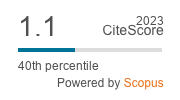Malaysian Journal of Mathematical Sciences, October 2014, Vol. 8(S)
Special Issue: International Conference on Mathematical Sciences and Statistics 2013 (ICMSS2013)
Interval Estimation for the Difference between Variances of Nonnormal Distributions that Utilize the Kurtosis
Sirima Suwan and Sa-aat Niwitpong
Corresponding Email: [email protected]
Received date: -
Accepted date: -
Abstract:
The minimum mean-squared error-best biased estimator (MBBE) of variance as proposed by Wencheko and Chipoyera [Estimation of the variance when Kurtosis is known, Stat Papers, 50:455-464,2009] have been used in this article by adjusting kurtosis estimation procedure based on trimmed mean and to be used in the construction of two asymptotic interval estimations for the difference between two independent variances of nonnormal distributions that utilizes the kurtosis via two hybrid methods. The first hybrid method is to estimate or recover the variances of the two variance estimates which are required for constructing the confidence interval for the difference of variances from the confidence limits for the two individual variances. The second hybrid method is to construct a confidence interval for the variance difference in an analogous way as recently proposed by Herbert, Hayen, Macaskill and Walter [Interval estimation for the difference of two independent variances. Communications in Statistics, Simulation and Computation, 40:744-758, 2011]. In the case where there is no difference between population variances, simulation results shown in terms of coverage probabilities and average widths that the confidence intervals generated from these two hybrid methods can be highly recommended in asymmetric (skewed) and symmetric distributions, respectively, because they both are not only perform well in the sense that both can generally well control the coverage probabilities to be closed enough to the nominal level when sample sizes are moderate or large regardless of balance or unbalance designs but also outperform than that of their existing confidence intervals which were established from the usual unbiased sample variance estimator. However, the confidence interval produced from the first method seems to be more preferable since it also hold its level well even for symmetric distributions but are slightly liberal only for highly leptokurtic while the other is liberal for asymmetric distributions. When the difference in variances occurs and distributions are normal in shape, the confidence interval generated from the first method is the most appropriate. The simulation based on the case in which variances are unequal or observations are drawn from dissimilar nonnormal distribution shapes have already been considered but the result appears to be out of interest.
Keywords: Minimum mean-squared error, MOVER, Kurtosis, interval estimation, biased estimator









